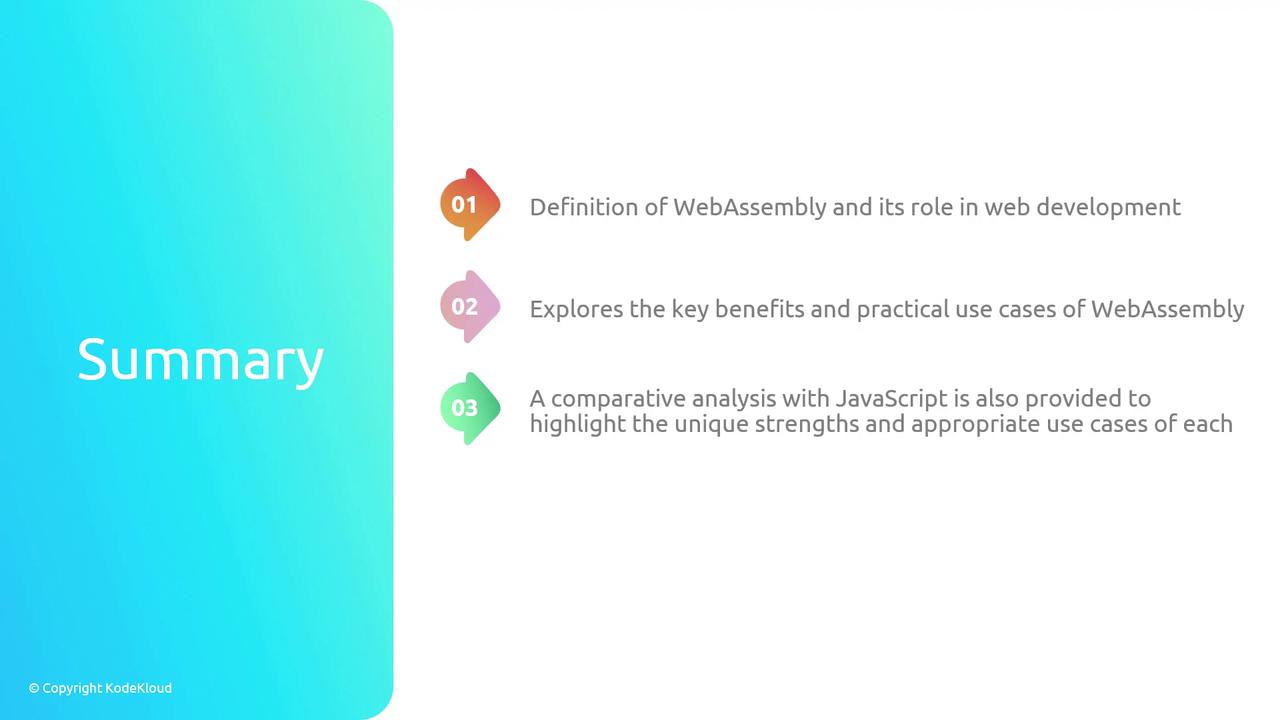Exploring WebAssembly (WASM)
Introduction to WebAssembly WASM
Section Summary
In this lesson, you’ll get a comprehensive overview of WebAssembly (Wasm), understand how it integrates with modern web applications, and see how it compares to JavaScript. By the end of this section, you will:
- Discover What WebAssembly Is: Core concepts, binary format, and browser integration.
- Explore Key Benefits & Use Cases: Performance gains, cross-language support, and real-world scenarios.
- Compare Wasm vs. JavaScript: Strengths, ideal workflows, and when to choose each technology.

Quiz Ahead
A short quiz follows this section to reinforce your understanding of Wasm fundamentals, its advantages, and how it complements JavaScript.
| Aspect | WebAssembly | JavaScript |
|---|---|---|
| Performance | Near-native execution speed | Interpreted with JIT compilation |
| Supported Languages | Rust, C/C++, Go, and more | ECMAScript only |
| Ideal Use Cases | Compute-intensive tasks, games, multimedia | UI interactions, event-driven logic |
| Browser Support | All major browsers | All major browsers |
Watch Video
Watch video content